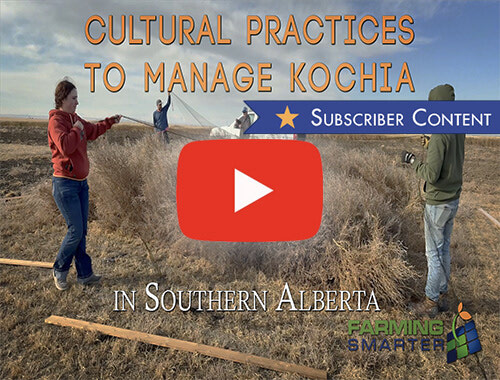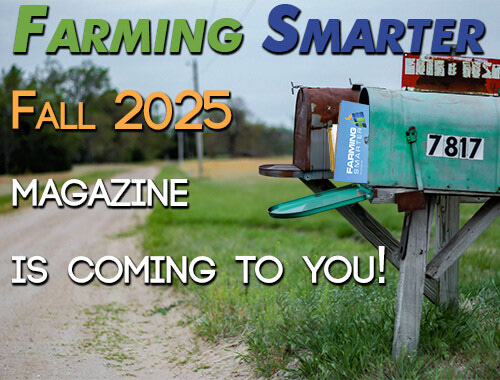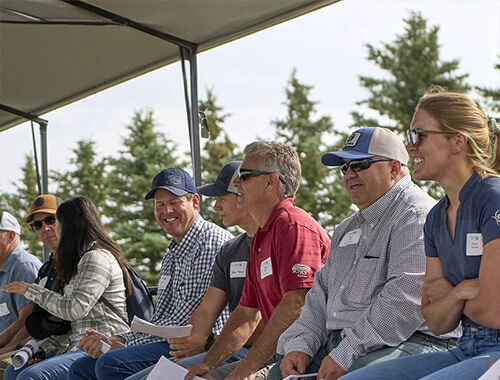Early harvest for 2023
With over three quarters of its 173 trials harvested, Farming Smarter expects to complete harvest by the second week of Sept except silage and grain corn trials.
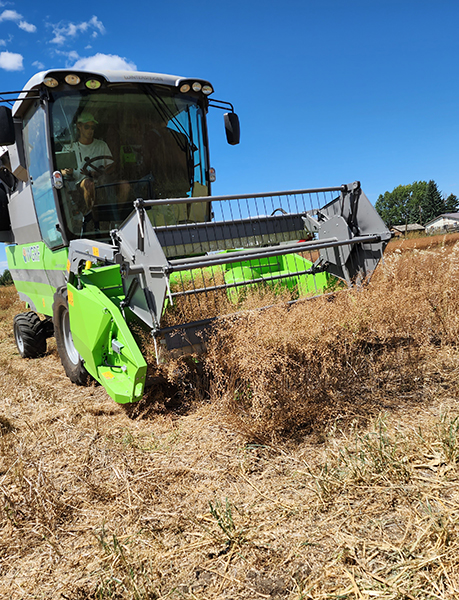 In one of our biggest years for research at Farming Smarter, we’re on our way to the quickest harvest yet. We got out there a little late, but once our events were done our harvest was all systems go! Carlo Van Herk, Research Technician at Farming Smarter, led the harvest charge for us. Since the call for harvest, our field teams have blended into one amorphous unit.
In one of our biggest years for research at Farming Smarter, we’re on our way to the quickest harvest yet. We got out there a little late, but once our events were done our harvest was all systems go! Carlo Van Herk, Research Technician at Farming Smarter, led the harvest charge for us. Since the call for harvest, our field teams have blended into one amorphous unit.
With our two combines, we’re able to manage all our trials with fantastic efficiency. Before our students went back to school, the team would run both combines with two people in each and a gopher between them. This allowed us to operate at full capacity and have the combines running whenever possible.
“Our Quantum Pro combine harvests all our canola and wide-row plots, since its bigger size can handle the material better. Meanwhile, our Classic takes care of everything else like beans and our narrow-row wheat. Effectively, this lets us take off multiple trials at the same time,” Van Herk comments.
This year, we had enough time and experienced staff to provide training sessions for our summer students. With all our staff able to run the combines, our crews were able to rotate between each other in shifts. While each combine collected yield samples from the plots, a gopher would help pull stakes and empty and clean the combines between trials.
“We’ve had the opportunity to be more efficient than we have in the past. With the good weather, hard work, and good luck with equipment, we’re harvesting faster than ever,” adds Van Herk.
When they aren’t running the combines, field teams are in the office preparing or inputting data from the trials.
Organized Chaos
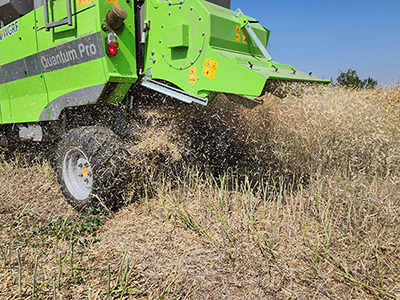 To stay on top of the fast-paced workload moving between plenty of hands, the field team relies on constant communication and daily check-ins. This, combined with color coded maps of the field and an Excel master document to track trials, they can plan an efficient path each day. The goal is to get as much done as possible before the summer students leave to return to school.
To stay on top of the fast-paced workload moving between plenty of hands, the field team relies on constant communication and daily check-ins. This, combined with color coded maps of the field and an Excel master document to track trials, they can plan an efficient path each day. The goal is to get as much done as possible before the summer students leave to return to school.
“Once the students are gone, it really hits the fan for us,” Van Herk jokes.
When the call to school reduces the field team, our pace really slows down. Less hands means less done in a day, though the team prepared for this and crafted a plan. The days become more segmented, as the teams use the mornings to set up winter trials, input data from trials and break into harvest teams for the afternoon. Eventually, they will switch focus to data input as harvest wraps up until corn is ready in late September.
Keep an eye out for updates from this year's trials on our website and social media!

